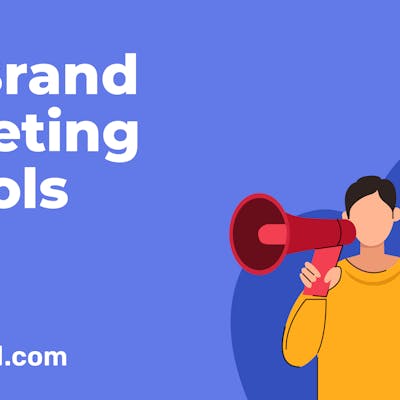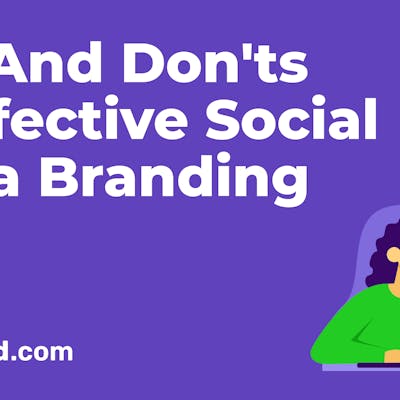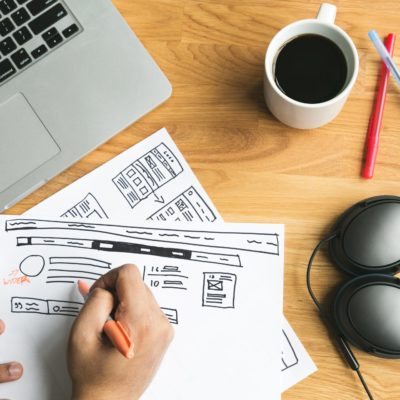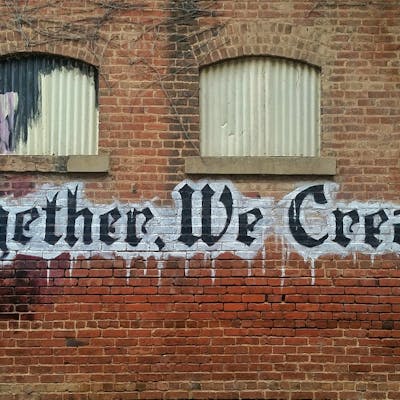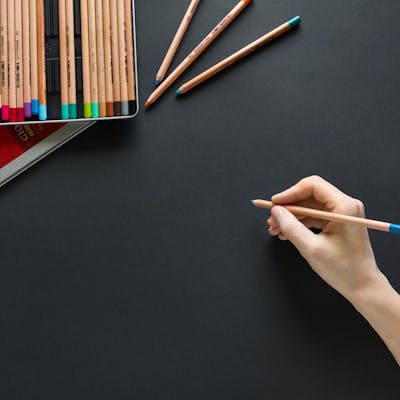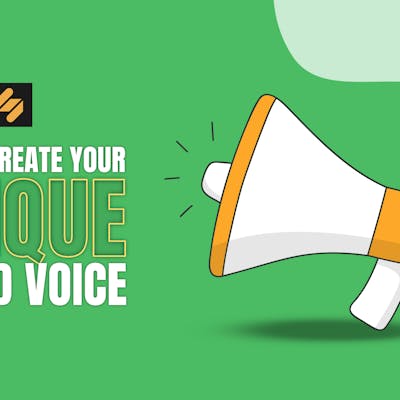Did you know that the human brain can process images 60,000x faster than words? That’s why when you think of your favorite brand, its logo checklist pops into your mind, whether it’s the iconic Nike swoosh or the timeless golden arches of McDonald’s.

A logo is your company’s most powerful symbol. In fact, 42% of consumers believe a logo effectively communicates a brand’s personality. This is why your logo must resonate with your audience and convey your brand’s story.
Now, let’s be real. A logo might look simple, but a lot of work goes behind creating a great one. Cue the research, brainstorming, and expertise.
Businesses today hire experts to design their brand logos. But, that doesn’t mean the job should always be completely outsourced. Nobody understands your brand like you do, which means the design process requires a lot of collaboration between you and the designer.
To make the task simpler, we’ve come up with this complete logo design checklist that’ll help you in each stage of your logo design process.
The Step-by-Step Checklist for Designing a Logo
Broadly, the logo design process can be broken down into 4 stages:
- Discovery is the initial phase where you understand and convey who your company/organization is, what you believe in, what you want to accomplish, and how you want to get there.
- Exploration is the research phase where you delve deeper into your brand identity, your audience personas, and the entire visual system by observing brands across multiple channels, i.e. website, social media networks, etc.
- Design is the stage when you come up with the first draft of your logo. This is where you zero in on elements like font, typography, color, and more.
- Refinement is the final step of the process. This is where you narrow down the final design and lay out all the guidelines to use the logo across your website and social media.
Now that we’ve established the design process, let’s check them out one by one.
Discovery Stage: Figuring the Why, What, and How
The logo is the core of your brand’s visual identity – it serves as the foundation for the entire narrative on which the brand is built. That’s why the first thing on the logo checklist is to evaluate your brand and what you want the logo to convey.
Research and self-discovery are vital in helping you write a creative brief for your logo designer. Colors, tones, and fonts each play a significant role in how your brand logo is received by the audience.

Here are some questions to ponder during this stage:
- Why does my brand exist?
- What is the thing I want my customers to associate my brand with most?
- What brand values do I want to convey?
- How will my brand solve the target audience’s problems?
- What is the brand’s voice?
- How would I like my customers to describe my brand?
Apart from discovering your brand, research the kind of stories your competitors convey through their logos, as well as emerging trends in the marketplace.
Related: The Best Logo Makers to Simplify Your Branding
Exploration Stage: Preparing a Creative Brief
Once you have your research in place, it is time to make a creative brief for the designer. The logo design process should be as delightful for the designer as it is for you.
This requires two-way communication and a solid brief with all the necessary elements. The brief will outline the project, goals, and inspiration so both you and your designer are on the same page.

Broadly, you’ll answer the following questions in the creative brief:
- Who You Are – In this part of the design brief, you’ll define your actual business. Along with the name of your business (and tagline, if you have one), you’ll clarify what you offer, your goals, your customers, and your competitors.
- Brand Personality – Your brand’s personality is a set of human characteristics that are attributed to your brand name. They’re expressed as adjectives that convey how you want people to perceive you (e.g. cheerful, youthful, dependable, friendly, sophisticated, etc).
- Creative Direction – When you perform your competitive research, you’ll come across logo designs that’ll inspire you. Additionally, you can reflect on these inspirations and your preferences in the creative brief to help the designer narrow down the choices.
Design Stage: Drafting and Designing on a Logo Maker
Once you have your creative brief in place for the designer, you move into the design phase.
Before the designer begins creating the first looks, he/she will study the creative brief to decide on colors, typography, use of symbols, composition, and other elements. Each element plays an important role in how the audience perceives your logo.
- Typography
Choosing the right fonts for your logo is just as crucial as selecting the perfect colors. It’s a step you definitely don’t want to skip in your logo design checklist. Keep in mind that using too many fonts can create visual chaos. The designer should stick to two (or three max.) fonts for a single logo.
If you opted for multiple fonts in the creative brief, ensure they either belong to the same font family or complement each other harmoniously. Ideally, the designer should avoid the use of overly decorative or hard-to-read fonts. Instead, more focus should be placed on selecting fonts that seamlessly blend with all the elements of your logo.
- Colors
Typically, designers create a mood board to collect all the images, designs, color combinations, photos, and illustrations they’re drawn to, and represent the look you want for your brand.
Professional designers use certain principles of color theory for logo design.
Also, different colors evoke different emotions and behaviors, which create the desired emotional response from your audience.
According to a survey by Website Planet in 2021, 76% of leading brands’ designs only use mono or two-color tones in their logos. Also, 40% of Fortune 500 companies use the color blue in their logos.
Armed with the mood board, your why, and a few keywords for direction, the designer can then begin sketching ideas on pencil and paper.
Ideally, the designer will approach you with these rough sketches and collaborate with you to narrow down ideas before designing vector images on a logo maker such as Canva, Adobe, Wix, etc.
To arrive at the final logo, you’ll need to consider which one best suits your brand’s personality.
- Shapes
Logos rely on shapes to convey their essence. They can, for example, incorporate shapes into the overall design, as seen in McDonald’s “M” formed by arches.
Shapes play a fundamental role in your new logo, forming not only the visual elements but also influencing the choice of fonts, even when using letter marks or wordmarks.
- Composition
The designer also has to achieve balance in the logo design by incorporating proportional and symmetrical qualities, resulting in visually appealing logos. By distributing equal weight on both sides of the horizontal and vertical planes, these logos are easy to look at and more accessible.
Refinement Stage: The Final Checks
If you ended the last phase with several different options, now is the time to narrow them down. And if you already have a final choice, put it to the test.
At the outset, you want to be sure it has all the elements of a good logo:
Is it:
- versatile?
- evocative?
- unique?
- meaningful?
- timeless?
In addition, ensure you check off all the technical aspects of the logo. For this, try considering the different mediums you’ll use your brand logo in. The logo will most likely be used on a variety of platforms, such as your website, business card, letterhead, stationery, etc. So, it should complement the rest of your brand identity on all types of media.
Plus, you need to be sure about the size and scale. Does it look as good at 1 inch when it’s 10 feet? Successful logos can be used on any media at any size without reducing in quality or readability.
Related: Test Your Logo With This Quick Exercise
Next, remember that less is more. The designer can easily convey your brand identity by using fewer elements and avoiding clutter. Take a look at famous logos like Disney, Apple, Nike, Twitter, and Mercedes – they all share a common trait: simplicity. Creating a simple logo makes it easier for your audience to understand and connect with your brand.
However, scaling your logo can distort it if it hasn’t been designed in vector format. If your logo isn’t in vector format, you might want to consider getting it redesigned this way. It’ll save you time and money in the future.
The 3 common types of vectors used for logos include:
- Encapsulated PostScript (EPS): This is Adobe’s standard for vectorizing logos. It’s highly recommended to use EPS for client icons.
- Adobe Illustrator Artwork (AI): This vector typeis a popular and modified version of EPS.
- Scalable Vector Graphics (SVG): Finally, SVGs are supported by an increasing number of browsers and ensure that your logo displays well on any screen resolution.
The Takeaway
Designing a logo is a whole journey in itself. From discovering your brand to arriving at the final vectors, it takes a whole lot of work. It’s certainly a Herculean task, but trust us, it’s worth the effort.
And, at Simplified, we’ve done all the heavy lifting for you. With our free AI logo maker, you can design a professional, customized logo in mere seconds. Plus, its simple and intuitive interface comes with tons of templates, premium fonts, animations, icons, shapes, illustrations, and sooo much more!







